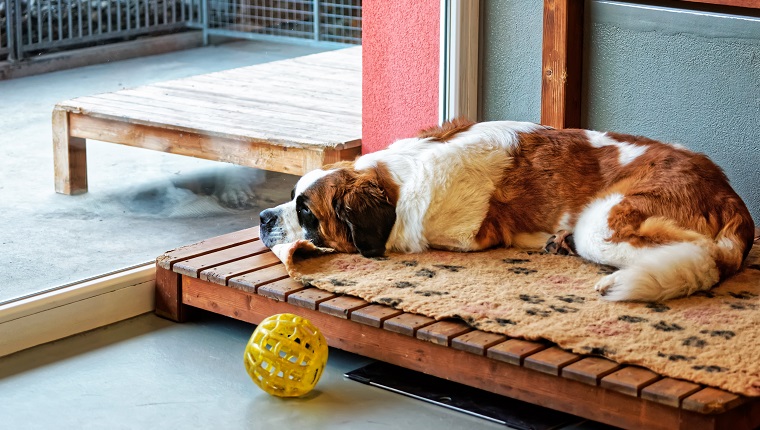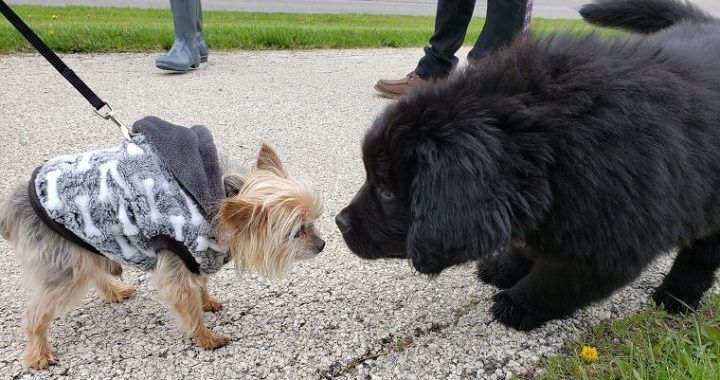4 Dog Walk Approaches to Add Enjoyment

Saint Bernard dog lying in breeding kennel, Martigny, Switzerland
4 Dog Walk Approaches to Add Enjoyment
I as of late saw a drawing of an individual strolling with her canine close by in wonderful heel position – and unmistakably loathing the experience. The canine’s idea bubble said, “Whose walk is this, in any case?”
Unfortunately, this embodies the all-around normal way to deal with canine strolling: go out, take the mandatory walk around the square, let the canine stop to discharge his insides and bladder and walk back home. Other than being exhausting, the canine gets next to no activity or mental incitement on this sort of walk!
Luckily, increasingly more canine darlings are understanding that, for greatest worth and pleasure by the two species, canine requirements to go a long way past the around-the-block washroom walk. For more fun on your strolls with your canine, look at the accompanying sorts of strolls and select the ones that are generally fit to you and your canine buddy:
- The Scent Walk (otherwise called a Sniff Walk or Sniffy Walk). This one is simple, and your canine will cherish you for it. To expand your canine’s happiness, select a calm strolling site where you can utilize a more drawn-out rope. Plan to go gradually. Simply walk around with your canine. Take as much time as necessary and allowed your canine to pick where to go and when to pause and sniff.
Aroma’s work is an incredible enhancement movement, engages your canine by offering him decision chances, and is exceptionally fulfilling and quieting for him. It is additionally shockingly tiring. Indeed, even a generally short “sniff walk” can assist your canine with being loose and less inclined to participate in undesirable practices when you get back home. A more extended sniff walk might clear him out for the remainder of the day! The Scent Walk is turning out to be progressively mainstream as proprietors perceive how cheerful this style of the walk makes their canines.
If you can’t track down an ideal green strolling site, just permitting your canine a lot of freedoms to pause and sniff on your comfortable stroll around the area can be significantly more satisfying for him than the conventional restroom walk.
You can supercharge your aroma stroll by going to your strolling site before you take your canine there. Leave him in the vehicle if safe/adequately cool to do as such, leave him with a mobile friend or leave him at home, while you go out first and generally broadcast treats or kibble around the strolling region. Presently watch him have a far better time as he tracks down the fortunes you have thrown. (Make sure to deduct an identical measure of calories from his dinners so he doesn’t tank up from all the sniff-treat fun.)
Impeded Dogs Enjoy Walks, Too
Indeed, even canines who are non-wandering, impaired, or who need to have their movement confined appreciate being gone for strolls. The advancement experience can add to their emotional well-being, particularly for canines who are something else “shut-ins.” This will necessitate that you track down a proper vehicle for your canine – like a cart or carriage, or a trailer or sidecar for your bike – and train your canine to remain in it. Since you will pull, pushing, or accelerating, a safety belt is a decent wellbeing measure, to make sure he doesn’t jump out at seeing some convincing interruption.
- Canine Parkour Walk. Parkour can add an extraordinary component of enjoyment to your canine’s strolls. You’ll have to discover a mobile site that offers an assortment of articles – regular or human-made, metropolitan or rustic – that you can welcome your canine to haggle during the walk. You can consolidate it with a fragrance walk, as well!
Items can remember rocks to hop for and off of, fallen logs to stroll on or hop over, stumps to adjust on, different jungle gym hardware to explore (kids have first dibs), lines to go through, seats to stroll across, wooden or stone wall to bounce on or over, etc.

A few coaches currently offer Dog Parkour classes, and your canine can even acquire titles from the International Dog Parkour Association. Parkour is fun, tiring, and incredible certainty-building action. For more data, see dogparkour.org.
- Fast Walk. This is a stroll on steroids, and a top pick of joggers and bicyclists. While this sort of walk furnishes your canine with more exercise than an exhausting washroom walk, there are some significant security contemplations to remember:
- Consider the restrictions of your canine’s variety or type. A few varieties are more athletic and appropriate to a quick run or bicycle ride, however brachycephalic (level confronted) and hefty bodied canines are a helpless contender for this kind of activity, particularly in blistering climate.
- Your running or trekking accomplice should be very much prepared so he doesn’t rush in the quest for a squirrel or another canine and pull you off your feet or your bicycle. See “Running With Your Dog Improves Overall Fitness and Health,” WDJ February 2009.
- Start lethargic – and converse with your vet. She can advise you if your canine is a decent possibility for running or trekking and can assist you with making a steady preparing plan so you’re in a bad way canine buddy doesn’t experience the ill effects of something over the top, excessively quick, too early. Canines who are youthful, fat, or who have clinical difficulties may not be an acceptable possibility for running or trekking.
- Stay off hot asphalt. Your shoes or bicycle wheels shield you from the warmth, however air temperatures as low as possible transform asphalt into a hot plate that consumes your canine’s paws at 125° F or higher. It requires just 60 seconds or less on asphalt that is 125° F for your canine’s cushions to consume.
- If you need to bicycle with your canine, you should prepare him for this – don’t simply bounce on your bicycle with your chain in your grasp and go! Various items will connect the rope to your bicycle so your hands are allowed to control your ride – and you and your canine should rehearse with these before going for longer rides. For tips on preparing your canine for this sort of activity, see “Bicycle Riding With Your Dog,” in March 2009.
- Off-Leash Walk. Last yet in no way, shape, or form least, I consider the Off-Leash Walk to be the exemplification of canine strolling fun.
Canine mentor and conduct advisor Sarah Stremming instituted the expression “decompression walk,” which means an off-chain walk (or stroll on a long queue) in nature, permitting the canine to move unreservedly, delay, sniff, and simply be. Decompression strolls can profit each canine.
On the off chance that your canine can be trusted to come when called, and if you have an area in your space where canines are legitimately permitted to be off-chain, this walk gives your canine the sort of self-sufficiency and opportunity that can come nearer to completely meeting his advancement and exercise needs than nearly whatever else: He can simply be a canine. He can run quickly, sniff anything he desires, bounce in the river, and settle on the entirety of his own decisions about what direction to go and what to do. It’s additionally simpler on you – you don’t need to deal with the rope, hold it back from getting it tangled around brush or stress over your canine pulling.
I found the delights of off-chain strolling with my canines when I lived in Marin County, California, where canines were permitted to be off the rope in the huge scopes of province-claimed open space in the slopes between towns. My canines and I went through hours climbing on Mt. Burdell on the north side of Novato. It kept me and my canines normal, and I have incalculable affectionate recollections within recent memory there.
It was there that I understood a significant reality – one that I share with every one of my customers right up ’til today: A restricted walk is an activity hours d’oeurve for most canines. At the point when you take your canine for an off-rope walk, he will run miles for each mile you walk and relish all the additional enhancement benefits. There’s not an on-chain walk that can verge on contrasting and this experience. See “How to Train Your Dog for Off-Leash Walks” in the March 2019 issue of WDJ for preparing tips.
On the off chance that your local area needs off-chain open spaces, look at Sniffspot (www.sniffspot.com. The organization contracts with landowners (they call them “has”) to give admittance to private spaces – some fenced, some not – where individuals can take their canines to run for a little expense.









